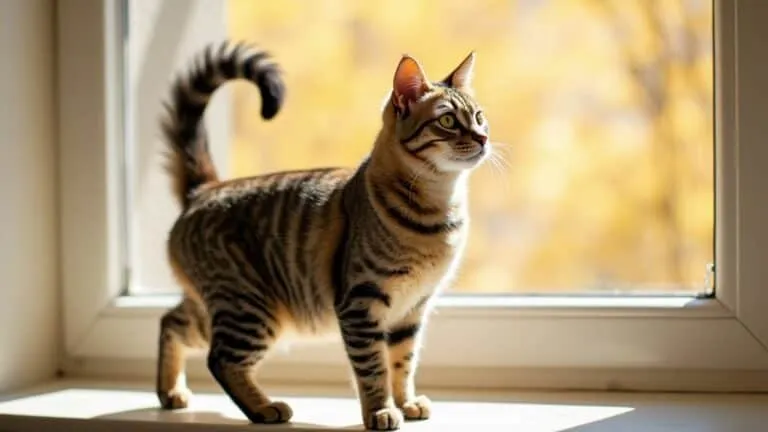The Best Fluffy Pancakes recipe you will fall in love with. Full of tips and tricks to help you make the best pancakes.

Are you ready to embark on a journey into the captivating world of cats' attraction secrets? Prepare to unlock the enigmatic bond between these mysterious creatures and humans as we delve into the fascinating realm of feline magnetism.
From their keen sense of smell to their astute observation of body language, cats have their own unique ways of connecting with us. But what exactly draws them to certain individuals and repels them from others?
Get ready to uncover the secrets behind cats' irresistible charm and discover how you can deepen your connection with these captivating companions.
Key Takeaways
- Cats are attracted to certain smells and friendly behavior, so using pleasant scents and exhibiting non-threatening posture can help attract them.
- Cats respond better to higher voices and friendly body language, so speaking softly and using positive expressions can make interactions more successful.
- Respecting a cat's boundaries and rewarding positive behaviors can increase their attraction to a person.
- Cats may be attracted to people who are quiet and relaxed, as well as to the energy and curiosity of children.
The Role of Scent and Body Language
Cats rely on their keen sense of smell and subtle body language to communicate and gather information. Cat communication through scent is a powerful tool, with pheromones playing a crucial role. By marking their territory with scent glands, cats leave behind messages for other cats, signaling their presence and ownership. They can also detect a unique personal scent in humans, which helps them differentiate between friendly and unfamiliar individuals.
Interpreting cat body language is equally important in understanding their needs and emotions. Cats communicate through a variety of subtle cues, such as the position of their ears, tail, and body posture. For example, a relaxed and upright tail indicates a content cat, while a lowered tail may signal fear or aggression.
Understanding these cues can help establish a deeper connection and improve interactions with cats.
Personality and Interactions
Understanding a cat's personality and knowing how to interact with them is essential for building a strong bond and creating a positive relationship. To paint a picture of how to successfully engage with a cat, consider the following:
- Recognizing friendly body language: Cats communicate through their body language. Look for signs such as relaxed ears, slowly blinking eyes, and a relaxed tail. These indicate that the cat is comfortable and open to interaction.
- Trusting higher voices: Cats are more trusting of higher-pitched voices. Using a soft, gentle tone can help put them at ease. On the other hand, deep voices may be perceived as threatening, so it's best to avoid using them when interacting with cats.
- Respecting boundaries: Cats appreciate individuals who respect their personal space. Give them the freedom to approach you at their own pace and avoid overwhelming them with constant attention. Show them that you value their independence and autonomy.
Attraction to Non-Cat People
Non-cat people may attract cats by exhibiting a quiet and relaxed demeanor. Understanding feline preferences is key to attracting these curious creatures. Cats are drawn to non-threatening behavior and body language, so it's important to approach them gently.
Ignoring cats can actually make them more likely to approach when they feel comfortable. Showering cats with attention may diminish their attraction, as some cats prefer space and independence. Non-cat people may have an advantage in attracting cats because they aren't actively pursuing them for snuggles and affection.
Attraction to Children
Children's fascination with animals can often attract outgoing and playful cats. Cats may enjoy the attention and playfulness of children, finding their energy and curiosity appealing. Interactions with children can be a dream come true for these cats, who may relish in the opportunity to engage in activities and games.
The impact of children on cat behavior can be positive, as cats may become more social and active when in the presence of children. This interaction can benefit both the child and the cat, as it provides opportunities for learning, companionship, and emotional support.
Additionally, cats may find comfort and security in the presence of children, as they provide a source of love and affection. Overall, the attraction between cats and children can create a mutually beneficial bond that enhances the well-being of both parties involved.
Socializing and Building a Connection
When socializing and building a connection with cats, it's important to approach them calmly and relaxed, allowing them to come to you instead of approaching them directly. Understanding cat body language is key to establishing trust through patience and respect. Cats communicate through their body posture, tail movements, and facial expressions. By observing their body language, you can gauge their comfort level and respond accordingly to avoid causing distress.
Use a soft voice and slow blink at cats to convey friendliness. Give cats time to adjust to your presence and allow them to smell your hand as a greeting. Engage in their favorite activities and use interactive toys and treats to interact and bond with them.
Understanding Cat Behavior and Preferences
To better understand cat behavior and preferences, it's essential to observe their body language and communication cues when socializing and building a connection with them. Cat communication plays a crucial role in deciphering their needs and desires.
Feline preferences can vary, but there are a few key factors to consider:
- Scent: Cats have a strong sense of smell and use it to communicate. They may be attracted to certain smells, such as food or the scent of other cats.
- Body language: Cats are drawn to friendly behavior and a non-threatening posture. Standing over a cat can make them feel scared, while crouching to meet a cat at eye level signals that it's okay to approach.
- Personality: Cats are more likely to bond with people who have a friendly and non-threatening personality. They also respond well to higher voices and friendly body language.
Developing a Bond With Cats
Developing a bond with cats requires patience, understanding, and consistent positive interactions. Bonding techniques include establishing trust through scent and body language.
Cats have a strong sense of smell and use it to communicate and gather information. They can detect a unique personal scent in humans, so allowing them to smell your hand as a greeting can help establish trust. Cats are also drawn to friendly behavior and a non-threatening posture. Crouching to meet a cat at eye level signals that it's okay to approach.
Additionally, cats are more likely to bond with people who respect their boundaries and show a friendly and non-threatening personality. Spending time with cats, engaging in their favorite activities, and using interactive toys and treats can further strengthen the bond. By showing genuine interest and care, you can develop a strong connection with cats.
Frequently Asked Questions
How Can I Tell if a Cat Is Attracted to Me?
You can tell if a cat is attracted to you by observing their body language and understanding feline behavior. Look for signs such as approaching you, rubbing against you, purring, and making eye contact.
What Are Some Signs That a Cat Is Uncomfortable or Scared?
If a cat is uncomfortable or scared, they may exhibit signs such as flattened ears, dilated pupils, hissing, growling, or trying to hide. To calm a scared cat, give them space, speak softly, and use gentle, slow movements.
Can Cats Form Strong Bonds With Multiple People?
Yes, cats can form strong bonds with multiple people. A cat's ability to socialize and feel comfortable around different individuals greatly impacts their capacity to form deep connections with multiple people.
How Can I Make My Home More Appealing to Cats?
To make your home more appealing to cats, create a feline friendly environment by providing DIY cat toys and furniture. Consider their preferences, such as cozy hiding spots and scratching posts, to ensure a comfortable and stimulating space for them.
What Are Some Common Mistakes People Make When Trying to Interact With Cats?
Do you know how to approach a shy cat? Some common mistakes people make when interacting with cats include approaching too quickly, standing over them, and not respecting their boundaries.
Conclusion
Now that you have delved into the mysterious world of cats' attraction secrets, you have gained a deeper understanding of their unique bond with humans.
By recognizing the power of scent and body language, as well as understanding their preferences for certain personality types, you can strengthen your connection with these enigmatic creatures.
So, embrace their magnetism, learn their language, and watch as your relationship with your feline companion blossoms into something truly remarkable.








